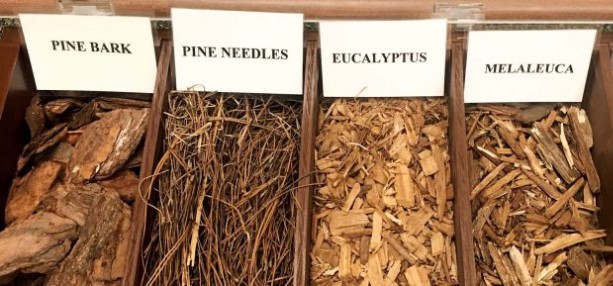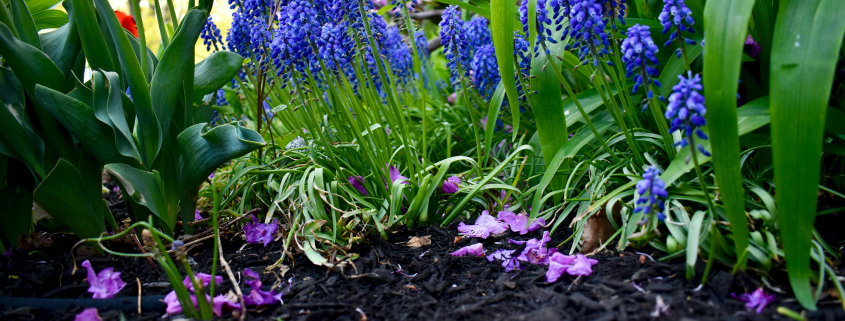Landscape Mulch 101
According to the U.S. Environmental Protection Agency (EPA) landscape irrigation is estimated to account for nearly one-third of all residential water use, totaling nearly 9 billion gallons per day.
So, how can a conscientious homeowner save water? Think mulch. A thick layer of mulch can help retain moisture allowing you to reduce your outdoor water use. As mulch decomposes, it adds nutrients to help improve the texture and fertility of your soil, improving water retention. Plus, it can also help to create an attractive visual contrast in your landscape.
There are several different types of mulch products on the market. When choosing mulch, you should consider factors like durability and sustainability in addition to appearance. The following is a brief description of some of the common types of mulch available to Florida residents.

- Pine Bark is a byproduct of the forest industry. It comes in various sizes. It typically has a dark brown color. It is a sustainable product and decomposes very slowly which is a benefit. However, it may float and wash away during heavy rains.
- Pine Straw typically comes from pine plantations which produce paper and wood products. Because they “knit together,” the pine needles are less likely to wash away than some other mulches. But color options are limited to natural pine needle color and availability is limited in some areas making it more difficult to find.
- Eucalyptus Mulch typically comes from plantations in South and Central Florida, where the trees are grown specifically for this purpose. The trees grow quickly, so this mulch is considered renewable. It is offered in various colors for attractive landscaping but is low in nutrients.
- Melaleuca Mulchis made from exotic invasive trees. The product is cured at a high temperature to kill the seeds, so they cannot germinate in your garden. It is also available in various colors. Using Melaleuca Mulch promotes removal of this invasive exotic species, and it is not attractive to termites.
- Fallen Leaves (including grass clippings) can sometimes be raked up for free in your landscape. This type of mulch is high in nutrients but decomposes quickly. However, many homeowners are not fond of this mulch as it is less tidy looking for formal landscape settings and needs frequent replenishment.
- Gravel, Pebbles, Shell or Synthetic Mulch can sometimes be useful in borders or pathways, but they do not contribute to the soil’s nutrient content or water-holding capacity. If you use this type of mulch, make sure to first install a woven ground cloth to keep it from sinking into our sandy soils. This type of mulch lasts a long time, but it will need to be cleared of debris regularly to look its best.




